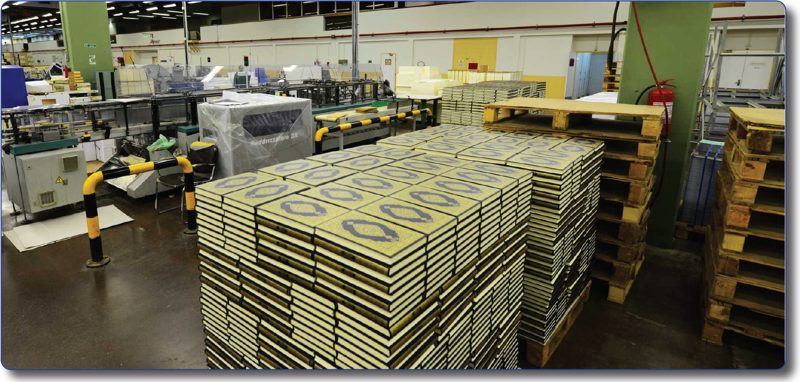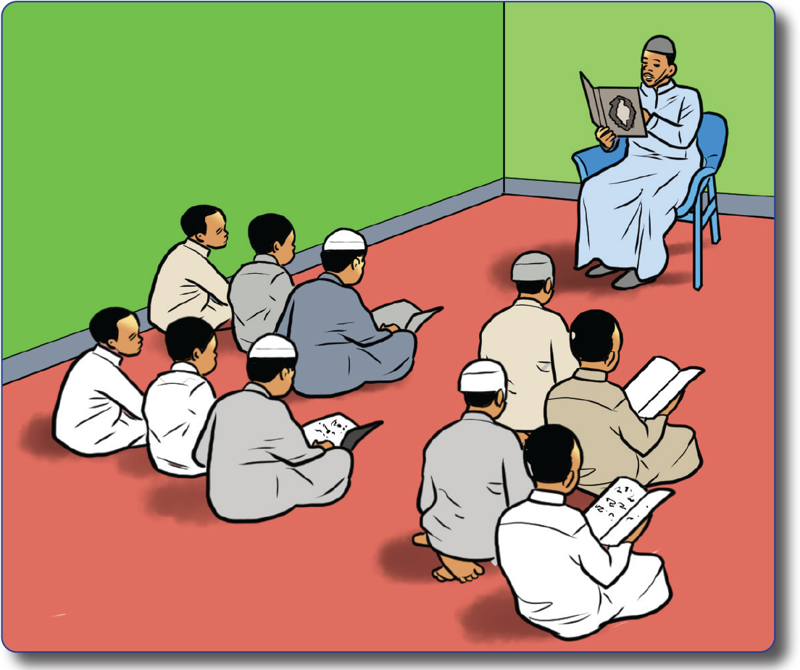Preservation of the Qur’an during the time of the Prophet (S.A.W.)
Activity 1: I use my skills to learn
- Using a digital device, search from the internet how the Qur’an was preserved during the time of the Prophet (S.A.W.).
- Write your findings on a chart or PowerPoint presentation.
- Share your findings with the class.
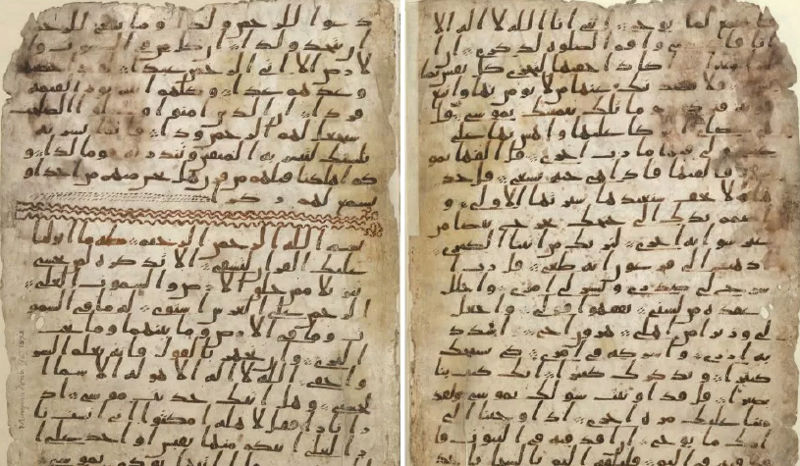
(a)
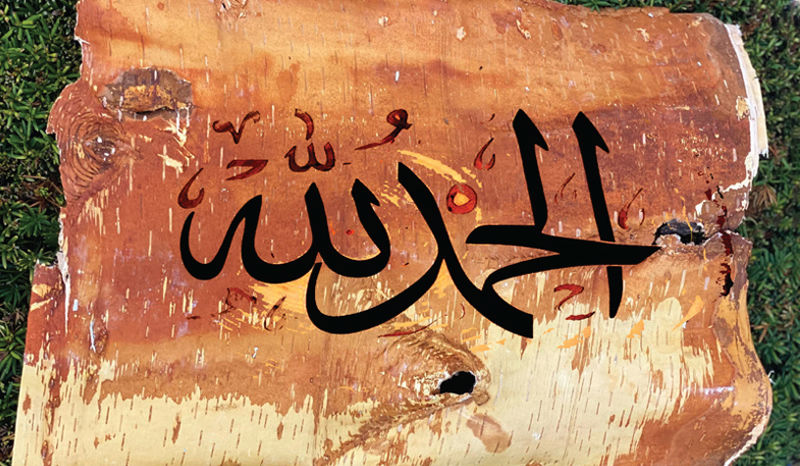
(b)
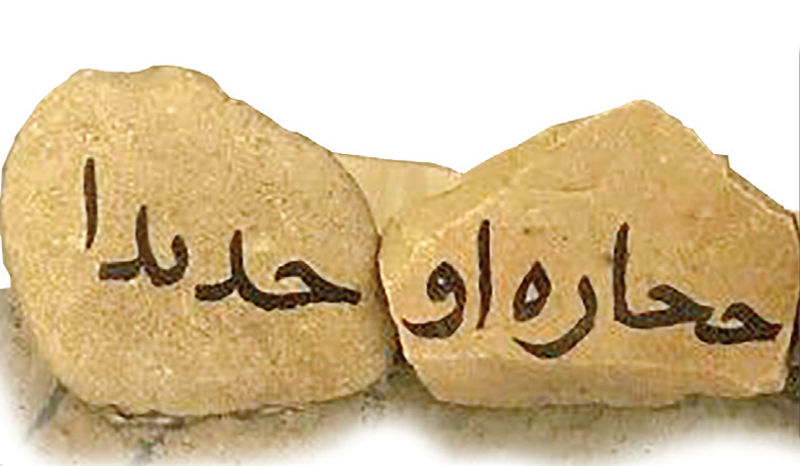
(c)
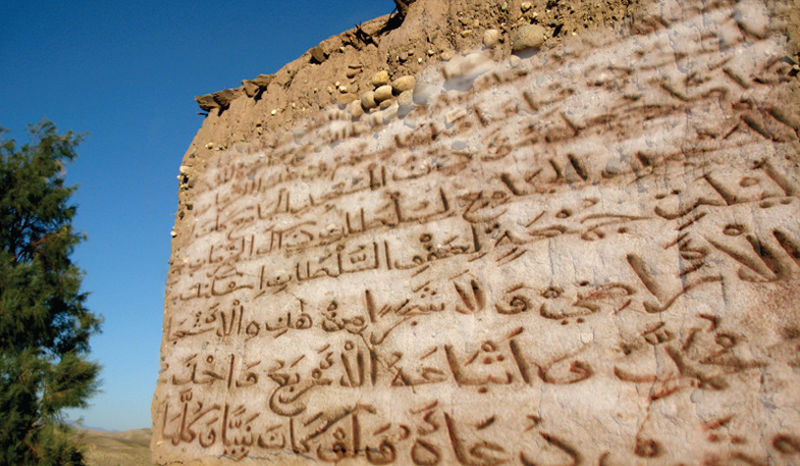
(d)
- Identify the materials shown above that were used to preserve the Qur’an.
- Draw charts showing how the Qur’an was preserved during the time of the Prophet (S.A.W.) and share them with members of the class.
Activity 3: Reading Time
Learners of Usawa Junior Secondary School carried out a research. They wanted to know the modes used to preserve the Qur’an during the time of the Prophet (S.A.W.). They made the following discoveries:
- Writing the Qur’an
- The Prophet (S.A.W.) had scribes who wrote the Qur’an as it was revealed.
- He guided his scribes on the arrangement of verses and the order of chapters.
- Teaching the Qur’an
- He encouraged his Swahaba to learn the Qur’an and teach it.
- He listened to his Swahaba recite the Qur’an and made corrections where necessary.
- He explained the meaning of the Qur’an to his Swahaba.
- Recitation of the Qur’an
- The Qur’an was recited daily in prayers.
- The Prophet (S.A.W.) used to recite the whole Qur’an during the month of Ramadhan.
- The Prophet (S.A.W.) encouraged his Swahaba to recite the Qur’an in the month of Ramadhan.
- Memorisation of the Qur’an
- The Prophet memorised the Qur’an.
- He encouraged swahaba to memorise the Qur’an.
Activity 4: Working individually
Copy the chart below in your exercise book on preservation of the Qur’an during the time of the Prophet (S.A.W.).
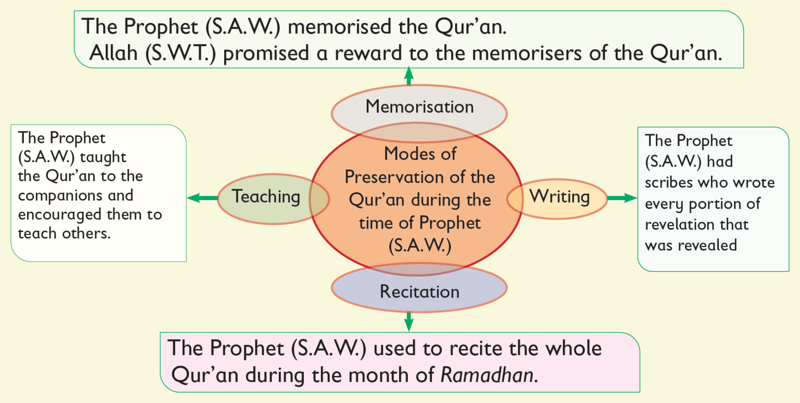
Activity 5: Working in pairs
- Write the following verses of the Qur’an on a manila paper or a locally available material.

“Verily, those who disbelieved in the Reminder (the Qur’an) when it came to them (shall receive the punishment). And verily, it is an honourable respected Book”. (Qur’an 41:41)

“Falsehood cannot come to it from before it or behind it (it is) sent down by the All‑Wise, Worthy of all praise [Allah (S.W.T.)]”. (Qur’an 41:42)

“And recite what has been revealed to you [O Muhammad (S.A.W.)] of the Book (the Qur’an) of your Lord (recite it, understand and follow its teachings and act on its orders and preach it to men). None can change His Words, and none will you find as a refuge other than Him.)” (Qur’an 18:27)
- Display your work in the classroom.
Activity 6: I take the initiative to learn
- Memorise Qur’an 41:41–42.
- Recite before the class.
Activity 7: Enriching my knowledge
Importance of preserving the Qur’an
- Muslims are encuraged to memorise the Qur’an as a measure of preserving it.
- Preservation ensures the Qur’an remains in its original forms as revealed by Allah (S.W.T.).
Preservation of the Qur’an during the time of the Rightly Guided Caliphs
Activity 1: I use my skills to learn
- Find out from Islamic books or the internet how the Qur’an was preserved after the death of the Prophet (S.A.W.).
- Present your work to your teacher for marking.
Activity 2: Working in pairs
Take time to read the following historical moment:
After the death of the Prophet (S.A.W.), Abu Bakar (R.A.) became the leader of the muslim Ummah. He faced different rebellions that led to battles. One of these battles was the battle of Yamama where several memorisers of the Qur’an died. Umar (R.A.) got concerned about the situation. He suggested to Caliph Abu Bakar (R.A.) to collect and compile the Qur’an into a single volume. A committee of scribes and memorisers, led by Zaid bin Thabit (R.A.) did the compilation.
Activity 3: Reading Time
Teacher Farhiya asked her learners to hold group discussions to find out how the Qur’an was preserved during the time of the Rightly Guided Caliphs. They made the chart presentation below:
Modes of preservation of the Qur’an during the time of the Rightly Guided Caliphs
- Some companions kept personal copies of sections of the Qur’an.
- The Qur’an was recited in daily prayers ensuring it was revised.
- The Rightly Guided Caliphs applied the teachings of the Qur’an in administration.
- The Qur’an teachers went to different parts of the Islamic empire to teach new muslims.
- The scattered recordings of the Qur’an were collected and compiled into a single volume during the caliphate of Abu Bakar (R.A.).
Modern Methods of Preserving the Qur’an
Activity 1: Working in pairs
Study the following pictures and identify the present modes of preservation of the Qur’an.
Activity 2: Reading Time
Read the PowerPoint presentation below on how Qur’an is preserved in the present times.
 |
|
Materials used during the time of the Prophet (S.A.W.) and the Rightly Guided Caliphs | Materials used in the present times |
Activity 4: Working as a class
With guidance from your teacher:
- Form groups.
- Choose a verse or verses from the Qur’an for memorisation.
- Practise memorising the verses or surah in your groups.
- Choose a member to represent the group in the competition.

Significance of preserving the Qur’an
- Discuss the importance of preserving the Qur’an.
- Write your points down.
- Share your ideas with the rest of the class.
Activity 2: Reading Time
Salma and Najma are classmates. Their teacher asked them to discuss and make notes on the importance of preserving the Qur’an. They prepared the following points:
- Preservation protects the Qur’an from infiltration.
- Unity of the muslim Ummah is strengthened.
- It ensures protection of the Qur’an for future generations.
- Those who preserve the Qur’an in any format gain reward from Allah (S.W.T.).
Quick Facts
- The main method of preserving the Qur’an in early days was through memorisation.
- Qur’an was first compiled into a single volume during the reign of Caliph Abu Bakar (R.A.).
- Many muslims memorise the Qur’an across the world.
- Today, the Qur’an can be accessed on digital devices with internet connectivity.
Digital Moment
- Use this link to download an audio recitation of the Qur’an.
Link: https://quranicaudio.com/ - Share it with your parent or guardian and siblings at home.
Home Activity
- Using a digital device, take turns with your siblings to record yourselves reciting some verses of the Qur’an.
- Prepare flash cards on materials used to record the Qur’an in the present times.
